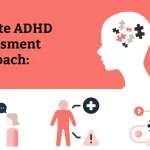Somatic experiencing therapy is a body-centred form of psychotherapy that focuses on relieving and resolving the symptoms of post-traumatic stress disorder (PTSD) and other mental and physical conditions related to trauma.
What Is Somatic Experiencing Therapy?
Somatic experiencing therapy draws on the work of Dr Peter Levine, who developed the approach in the 1970s. Levine observed that wild animals can shake off and release traumatic events from their nervous systems through involuntary shaking, trembling, and other somatic (bodily) responses.
However, humans tend to override or repress these innate “discharge” mechanisms, leading to PTSD symptoms.
Somatic experiencing therapy aims to help people rediscover these innate abilities to resolve and release trauma that’s been “frozen” in the body and nervous system. Through gentle attention and guidance from a trained therapist, clients learn to tune into subtle body sensations and encourage the emergence of small shaking or trembling movements. Over time, these small discharges allow the nervous system to process and integrate traumatic memories and return to a balanced, healthy state.
Techniques Used in Somatic Experiencing Therapy
Somatic experiencing therapists use a variety of hands-off techniques to guide clients, including:
Mindfulness: Bringing nonjudgmental attention to body sensations in the present moment. This helps clients get in touch with suppressed sensations and involuntary impulses related to past trauma.
Tracking: Therapists help clients tune into subtle body cues like heart rate, temperature changes, gastrointestinal sensations, tremors, etc. Tracking helps clients build awareness of messages from the nervous system.
Pendulation: Shifting attention back and forth between sensations of discomfort or constriction and opposite sensations of expansion or ease. Pendulation helps diffuse traumatic activation.
Titration: Carefully increasing a little bit of traumatic activation at a time, and then returning to a calm, balanced state. This slowly allows the nervous system to process trauma without becoming overwhelmed.
Discharge: Releasing small amounts of muscular tension through shaking, trembling, or other gentle movements. This enables the nervous system to gently complete its built-up response to past overwhelming events.
What Somatic Experiencing Therapy Can Help With
Research shows somatic experiencing can be an effective treatment approach for:
PTSD – In a study of people with PTSD related to political violence, 70% of those who received somatic experiencing sessions saw clinically significant reductions in symptoms.
Chronic pain – A study found somatic experiencing led to significant reductions in pain intensity and associated psychological distress in people with chronic low back pain.
Anxiety – Somatic experiencing principles have been incorporated into body-oriented treatments for panic disorder, generalized anxiety disorder, and phobias.
Depression – Body-based approaches that include somatic experiencing techniques have shown promising results for depression.
Traumatic brain injuries – Early research indicates somatic experiencing may help restore cognitive, emotional, and social functioning in people with traumatic brain injuries.
So while somatic experiencing is renowned for helping people overcome PTSD, evidence suggests it can benefit many other conditions—both physical and psychological—that involve a traumatic stress component.
Benefits of Somatic Experiencing Therapy
The gentle, body-based approach of somatic experiencing therapy offers several advantages:
It’s accessible and tolerable. The gradual titration techniques mean clients are not flooded or overwhelmed by traumatic memories. This makes it a good option for those too fragile for exposure-based therapies.
It builds internal resources. As clients learn to self-regulate and release trauma, they cultivate resilience and tools to handle future stressful events.
It emphasizes client experiences. Therapists follow the client’s internal cues rather than applying external techniques. This empowers the client as an expert on their own body.
It reduces hyperarousal. By discharging fight-or-flight energy trapped in the nervous system, somatic experiencing reduces hypervigilance and anxiety.
It’s integrative. Somatic experiencing works well alongside other therapeutic modalities like EMDR, mindfulness, and psychodynamic approaches.
According to a 2005 study in the journal Psychotherapy, over 95% of individuals who underwent somatic experiencing therapy reported clinically significant improvements in PTSD symptoms like flashbacks, emotional numbing, and irritability. For many people, somatic techniques provide rapid and lasting relief from long-standing trauma-related struggles.
Effectiveness of Somatic Experiencing Therapy
While larger controlled studies are still needed, preliminary research suggests somatic experiencing therapy is highly effective for trauma-related conditions like PTSD. For example:
A 2006 study found that after 20 sessions of somatic experiencing therapy, 85% of participants no longer met the criteria for full-blown PTSD, and nearly all reported improvements in PTSD-related symptoms.
A 2008 study in the Journal of Traumatic Stress found that somatic experiencing therapy led to significant reductions in PTSD avoidance symptoms and large effect sizes compared to talk therapy.
A 2012 meta-analysis concluded that body-oriented therapies like somatic experiencing are significantly more effective than standard care, psychosocial therapies, or medication for trauma.
According to statistics from the Somatic Experiencing Trauma Institute, over 95% of clients report clinically significant improvements in trauma symptoms after somatic experiencing therapy.
While promising, more rigorous clinical trials are needed to further demonstrate the efficacy of this approach compared to other PTSD treatments. But so far, findings suggest somatic experiencing offers a powerful way to resolve trauma and its debilitating effects in both mind and body.
Can you use Somatic Experiencing and Body-oriented therapy at the same time?
Yes, it is possible to incorporate somatic experiencing with other body-based therapies. Somatic experiencing principles complement modalities like sensory motor therapy, eye movement desensitization and reprocessing (EMDR), and Gestalt therapy nicely.
Many somatic experiencing practitioners integrate gentle touch therapies like CranioSacral therapy or massage techniques as well. The key is finding a therapist knowledgeable about both modalities who can blend them in a safe, gentle way that respects the client’s window of tolerance.
With the right therapist, combining somatic experience with body-oriented techniques that promote relaxation, self-awareness, and trauma release can be extremely beneficial. A comprehensive, body-mind approach allows clients to work through trauma on multiple levels simultaneously.
Things to Consider About Somatic Experiencing Therapy
While somatic experiencing therapy is a breakthrough treatment for trauma, it’s important to keep a few things in mind:
It requires patience and commitment. Quick fixes are unlikely. Healing trauma takes time as the nervous system gradually releases ingrained survival responses.
It can stir up intense sensations or emotions. As repressed trauma begins to surface, clients may feel destabilized or overwhelmed at times. Therapists are trained to manage this carefully.
It’s not a standalone “cure.” Somatic experiencing works best as one part of a multifaceted treatment plan, which may also include medication, psychotherapy, or other modalities.
It’s not for acute trauma. Somatic experiencing is not suitable for recent traumas until the initial shock has passed and clients are stable. Other interventions should be provided immediately after traumatic events.
Outcomes depend on clients’ openness. Like all psychotherapy, somatic experiencing requires a willingness to look inward. Resistance or defensiveness will limit results.
By keeping these factors in mind, clients can develop reasonable expectations about somatic experiencing therapy and how it fits into their healing process.
How to Get Started With Somatic Experiencing Therapy
If you’re interested in exploring somatic experiencing therapy:
Look for a certified somatic experiencing practitioner. Therapists must complete extensive training to become certified in this modality. Visit the Somatic Experiencing Trauma Institute website for a directory.
Ask about their background. Find a therapist with experience applying somatic techniques to your specific condition or trauma.
Discuss your treatment goals. Make sure the therapist understands your objectives and how somatic experiencing therapy can help.
Know what to expect. Preadmission consultations allow therapists to explain the approach and prepare clients appropriately. This informs treatment decisions.
Consider a therapeutic retreat. Multi-day intensive somatic experiencing programs at retreat centers combine therapy sessions, psychoeducation, and restorative activities.
By doing your homework, you can find a somatic experiencing therapist who is the right fit to help you overcome PTSD or trauma-based conditions. Remember, you deserve to feel safe, heard, and hopeful about healing.
What to Expect in Somatic Experiencing Therapy Sessions
Somatic experiencing therapy is a gentle, collaborative approach. In sessions, you can expect:
An emphasis on feelings. The therapist will encourage you to describe how you feel physically and emotionally at all times.
Guidance noticing body sensations. Through mindfulness, tracking, and other tools, the therapist will draw attention to physical cues.
Support moving at your pace. The therapist follows your lead, waiting until you feel safe enough to approach difficult sensations or memories.
Encouragement of small releases. Through gestures like yawning, sighing, or tearing up, the therapist will help your nervous system discharge a little activation.
Pendulation and titration. By carefully alternating between traumatic material and your “island of safety,” the therapist will ensure you don’t get flooded.
Collaboration. The therapist respects your instincts about what feels right for your body and psyche. You are the decision-maker.
No prescriptions. Beyond creating







